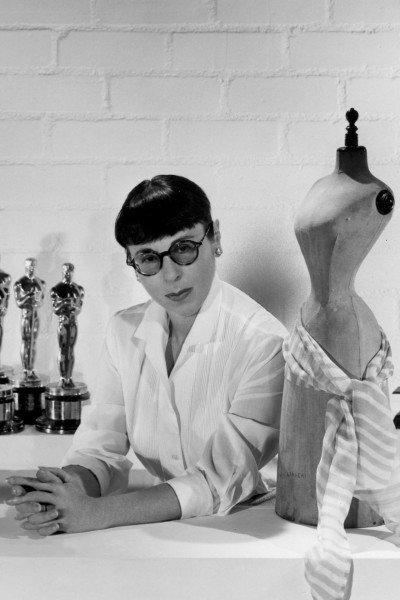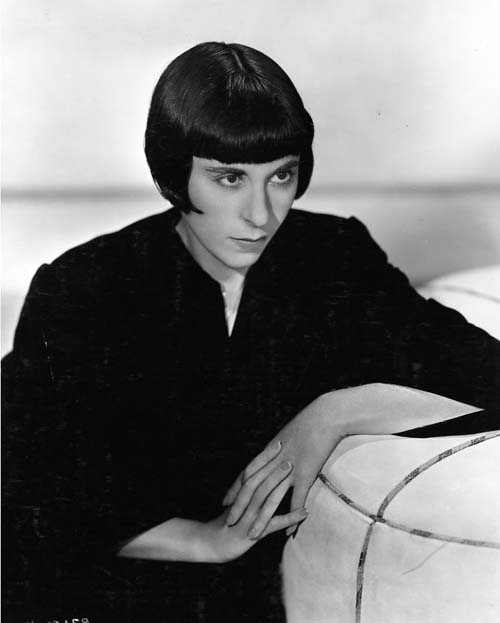Edith Head (Edith Claire Posener)

She was born Edith Claire Posener in San Bernardino, California, the daughter of Jewish parents, Max Posener and Anna E. Levy. Her father, born in January 1858, was a naturalized American citizen from Germany, who came to the United States in 1876. Her mother was born in St. Louis, Missouri in 1875, the daughter of an Austrian father and a Bavarian mother. It is not known where Max and Anna met, but they married in 1895, per the 1900 United States Federal Census records. Just before Edith’s birth, Max Posener opened a small haberdashery in San Bernardino which failed within a year. In 1905 Anna married mining engineer Frank Spare, from Pennsylvania. The family moved frequently as Spare’s jobs moved. The only place Head could later recall living in during her early years was Searchlight, Nevada. Frank and Anna Spare passed Edith off as their mutual child. As Frank Spare was a Catholic, Edith ostensibly became one as well. In 1919, Edith received a bachelor of arts degree in letters and sciences with honors in French from the University of California, Berkeley, and in 1920 earned a master of arts degree in romance languages from Stanford University. She became a language teacher with her first position as a replacement at Bishop’s School in La Jolla teaching French. After one year, she took a position teaching French at the Hollywood School for Girls. Wanting a slightly higher salary, she told the school that she could also teach art, even though she had only briefly studied the discipline in high school. To improve her drawing skills, at this point rudimentary, she took evening classes at the Chouinard Art College. On July 25, 1923, she married Charles Head, the brother of one of her Chouinard classmates, Betty Head. Although the marriage ended in divorce in 1936 after a number of years of separation, she continued to be known professionally as Edith Head until her death.
In 1924, despite lacking art, design, and costume design experience, the 26-year old Head was hired as a costume sketch artist at Paramount Pictures in the costume department. Later she admitted to “borrowing” other student’s sketches for her job interview. She began designing costumes for silent films, commencing with The Wanderer in 1925 and, by the 1930s, had established herself as one of Hollywood’s leading costume designers. She worked at Paramount for 43 years until she went to Universal Pictures on March 27, 1967, possibly prompted by her extensive work for director Alfred Hitchcock, who had moved to Universal in 1960. Head’s marriage to set designer Wiard Ihnen, on September 8, 1940, lasted until his death from prostate cancer in 1979. Over the course of her long career, she was nominated for 35 Academy Awards, annually from 1948 through to 1966, and won eight times – receiving more Oscars than any other woman.
Although Head was featured in studio publicity from the mid-1920s, she was originally over-shadowed by Paramount’s lead designers, first Howard Greer, then Travis Banton. Head was instrumental in conspiring against Banton, and after his resignation in 1938 she became a high profile designer in her own right. Her association with the “sarong” dress designed for Dorothy Lamour in The Hurricane (1937) made her well-known among the general public, although Head was a more restrained designer than either Banton or Adrian. She gained public attention for the top mink-lined gown she created for Ginger Rogers in Lady in the Dark (1944), which caused much comment owing to it countering the mood of wartime austerity. The establishment, in 1949, of the category of an Academy Award for Costume Designer further boosted her career, because it began her record-breaking run of Award nominations and wins, beginning with her nomination for The Emperor Waltz. Head was known for her low-key working style and, unlike many of her male contemporaries, usually consulted extensively with the female stars with whom she worked. She herself always dressed very plainly, preferring thick-framed glasses and conservative two-piece suits. As a result, she was a favorite among many of the leading female stars of the 1940s and 1950s, such as Ginger Rogers, Bette Davis, Barbara Stanwyck, Shirley MacLaine, Grace Kelly, Audrey Hepburn, and Elizabeth Taylor. In fact, Head was frequently “loaned out” by Paramount to other studios at the request of their female stars. On February 3, 1955 (Season 5 Episode 21), Edith Head appeared as a contestant on the Groucho Marx quiz show You Bet Your Life. She and her partner won a total of $1540. Her winnings were donated to charity. Head also authored two books, The Dress Doctor (1959) and How To Dress For Success (1967), describing her career and design philosophy.
In 1967, at the age of 70, she left Paramount Pictures and joined Universal Pictures, where she remained until her death in 1981. By this point, Hollywood was rapidly changing from what it had been during Head’s heyday in the 1930s-1940s. Studio-based production was giving way to outdoors and on-scene shooting, and many of the actresses from that era whom she worked with and knew intimately had retired or were working less. She thus turned more of her attention to TV, where some old friends such as Olivia De Havilland had begun working. In 1974, Head received a final Oscar win for her work on The Sting. During the late 1970s, Edith Head was asked to design a woman’s uniform for the United States Coast Guard, because of the increasing number of women in the Coast Guard. Head called the assignment a highlight in her career and received the Meritorious Public Service Award for her efforts. Her designs for a TV mini-series based on the novel Little Women were well received. Her last film project was the black-and-white comedy Dead Men Don’t Wear Plaid (1982), starring Steve Martin and Carl Reiner, a job Head was chosen for because of her expertise on 1940s fashions. She modeled Martin and Reiner’s outfits on classic film noir and the movie, released in theaters just after her death, was dedicated to her memory. Head died on October 24, 1981, four days before her 84th birthday, from myelofibrosis, an incurable bone marrow disease.
Born
- October, 28, 1897
- USA
- San Bernardino, California
Died
- October, 24, 1981
- USA
- Los Angeles, California
Cause of Death
- myelofibrosis
Cemetery
- Forest Lawn Memorial Park (Glendale)
- Los Angeles, California
- USA



